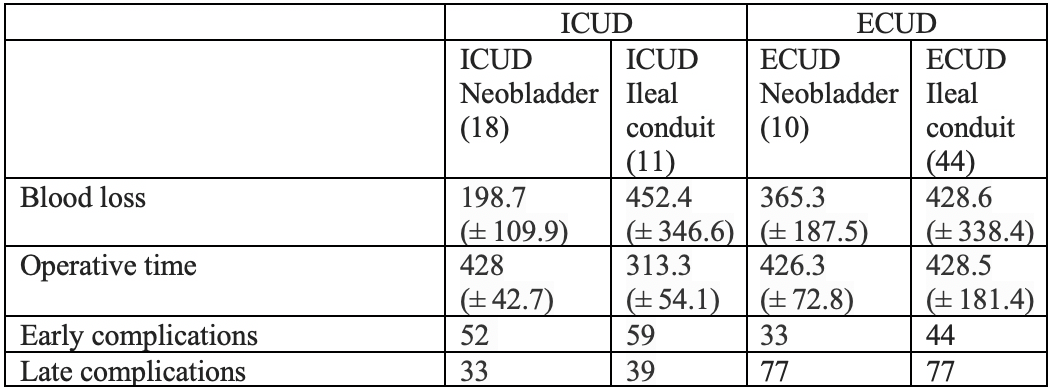Meta-analysis:
We included a total of 5 studies in the meta-analysis. Most of the data come from high-volume centers and International Robotic Cystectomy Consortium (IRCC). Except for less blood loss in the ICUD group compared to ECUD group operative time and postoperative complications are not significantly different between the two groups.

Cumulative analysis:
We included a total of 83 studies in this analysis. Data from the cumulative analysis may be more representative of the real-world data.
Operative time: ICUD neobladder seems to have less operative time compared to ECUD neobladder,
Blood loss: ICUD neobladder have less blood loss compared to ECUD neobladder
Early complications: ICUD seems to have more early complications
Late complications: ECUD seems to have more late complications

To conclude although there was an uptrend in the ICUD still the majority of the urinary diversions are performed using ECUD, ICUD seems to have overall comparable outcomes to ECUD. The results should be viewed with caution as none of the studies are randomized and most of these results come from high volume centers where the procedures are performed routinely.
Written by: Karthik Tanneru, MD, and Joseph Costa, DO, Department of Urology, University of Florida, Jacksonville, FL
Read the Abstract


